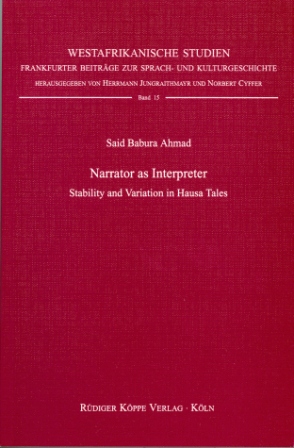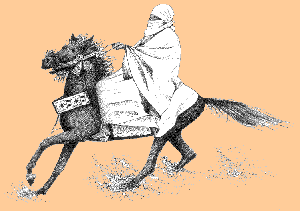



Introduction:
General - Themes - Plot structures - Variability and Stability in Versions of The Tale - Performance and Performer - Review of the Literature on Hausa Tales.
The Position of Tales and Tale-Telling in Hausa Society:
Factors which Militate Against Oral Tradition - Factors which Promote Hausa Tales
Thematic Classification of Hausa Tales:
Unfair Treatment of Members of the Family - The Theme of Reprehensible Behaviour of the Ruling Class - Personal Virtues and Virtuous Behaviour - Deceptive Behaviour
Structural Classification of Hausa Tales:
The Simple Tale - The Compound Tale - The Complex Tale
Variability and Stability in Versions of Stories covering Four Thematic and Three Structural Categories:
The Shared Core of the Stories “A Girl and her Father” and “A Girl and her Elder Brother” - The Shared Core of the Stories “Gizo and the Birds” and “Gizo and the Cranes” - The Shared Core of the Stories “The Poor Man Picked up by a Dove” and “The Man who had a Gown of Fronds of Dum-Palm” - Variation in the Presentation of the World of the Tale Aspects of Narrative Technique in the Performances of Hajiya Saude, Kubura Magaji and Hececi: Hajiya Saude’s Performance - Kubura Magaji’s Performance - Abdu Gala’s Performance.
Stanislaw Pilaszewicz in Afrika und Übersee, 81/1998, 154–156
© 2026 by Rüdiger Köppe Verlag – www.koeppe.de